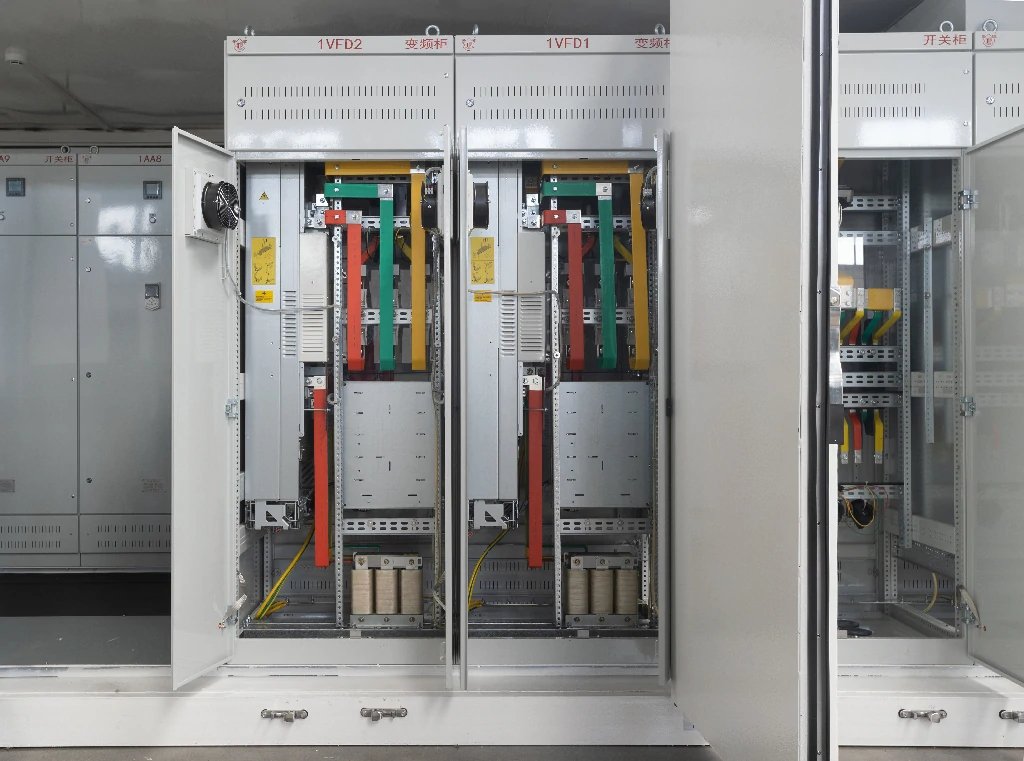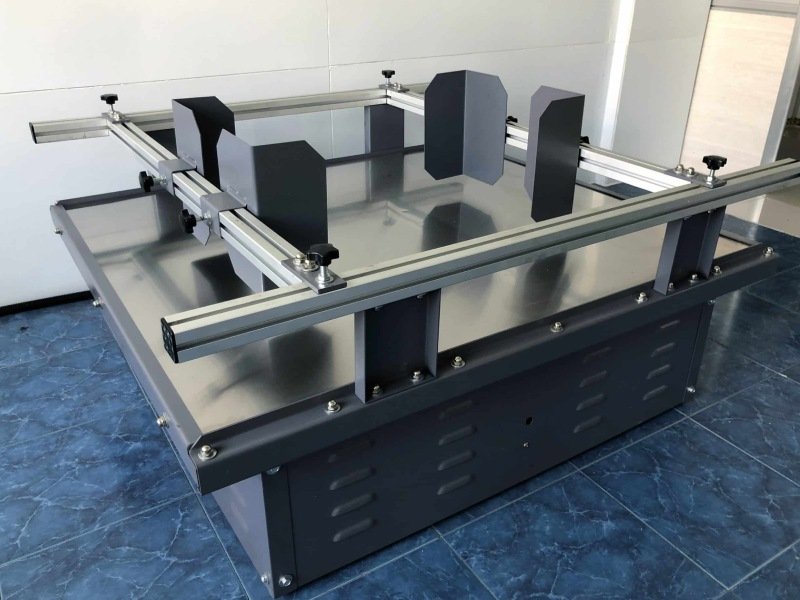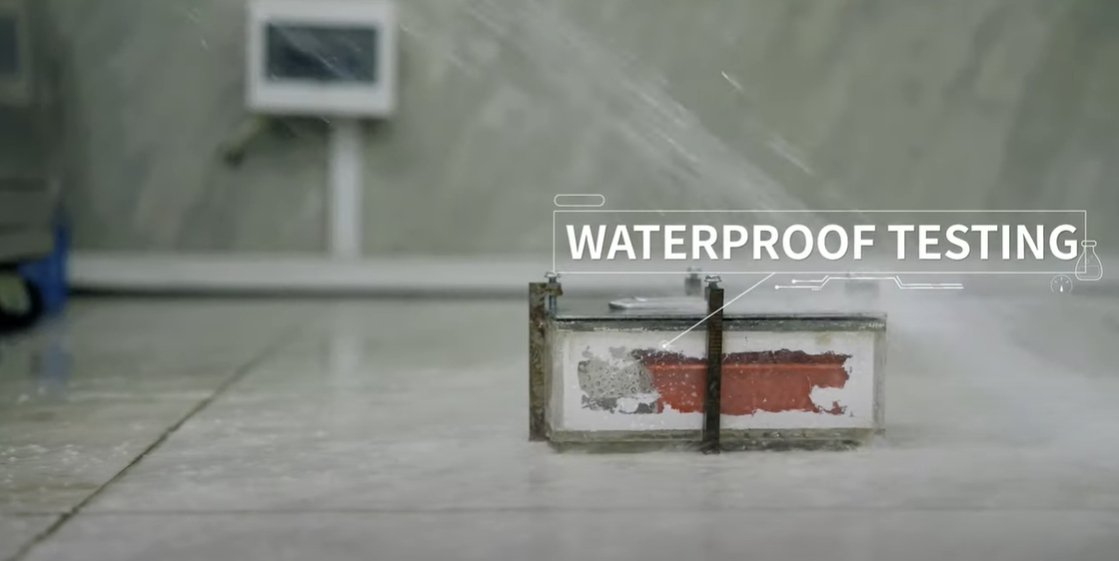In the intricate and high-stakes world of healthcare, medical equipment plays a pivotal role in diagnosing, monitoring, and treating patients. These sophisticated devices, ranging from diagnostic machines to portable monitors, require robust protection to ensure their functionality, safety, and longevity. Medical equipment enclosures serve as the first line of defense, safeguarding sensitive electronics from environmental hazards, physical damage, and unauthorized access. A critical yet often overlooked component of these enclosures is the latch—the mechanism that secures the enclosure, ensuring the equipment within remains protected while allowing authorized access for maintenance and operation. This article delves into the multifaceted applications of medical equipment enclosure latches, exploring their types, functions, and significance in various healthcare settings, while highlighting their impact on safety, accessibility, and operational efficiency.
The Role of Medical Equipment Enclosures
Medical equipment enclosures are specialized housings designed to protect delicate and expensive medical devices from a range of threats, including dust, moisture, temperature fluctuations, and physical impacts. These enclosures are engineered to meet stringent industry standards, such as IP (Ingress Protection) ratings and NEMA (National Electrical Manufacturers Association) classifications, which ensure resistance to water, dust, and other contaminants. Enclosures are used in diverse medical environments, from sterile operating rooms to bustling emergency departments, and even in home-care settings where portable devices are increasingly common.
The primary functions of medical equipment enclosures include:
- Suojaus: Shielding sensitive electronics from environmental hazards like liquids, dust, and bacteria, which could compromise device performance.
- Kestävyys: Ensuring the enclosure can withstand rigorous daily use, frequent cleaning with harsh disinfectants, and occasional impacts during transport.
- Accessibility: Allowing healthcare professionals to access the equipment for maintenance, calibration, or operation without compromising security.
- Turvallisuus: Preventing unauthorized access to sensitive equipment or data, which is critical in maintaining patient safety and compliance with regulations like HIPAA.
Latches are integral to achieving these functions, as they secure the enclosure while providing controlled access. The design and application of latches must balance security, ease of use, and environmental resilience to meet the unique demands of medical settings.
Types of Latches Used in Medical Equipment Enclosures
Medical equipment enclosure latches come in various forms, each tailored to specific applications and environmental requirements. The choice of latch depends on factors such as the type of equipment, the enclosure material, the frequency of access, and the environmental conditions. Below are the primary types of latches used in medical equipment enclosures:
1. Compression Latches
Compression latches are widely used in medical equipment enclosures due to their ability to create a tight, sealed closure. These latches feature a gasket that compresses against the enclosure frame when engaged, forming a barrier against dust, moisture, and contaminants. This sealing capability is particularly valuable in environments like operating rooms, where sterility is paramount, or emergency rooms, where equipment may be exposed to fluids.
- Sovellukset: Compression latches are ideal for enclosures housing diagnostic machines, such as MRI or CT scanners, and portable devices like defibrillators. They are also used in enclosures for laboratory equipment, where protection from dust and chemical exposure is critical.
- Benefits: The tight seal prolongs equipment life by preventing ingress of harmful substances. Compression latches are also vibration-resistant, making them suitable for portable equipment subject to movement.
- Materials: Typically made from stainless steel or die-cast zinc with corrosion-resistant coatings, these latches withstand harsh cleaning agents and environmental conditions.
2. Cam Latches
Cam latches are simple, reliable mechanisms that use a rotating cam to secure the enclosure. They are popular for their ease of installation and operation, making them suitable for enclosures that require frequent access.
- Sovellukset: Cam latches are commonly found in medical cabinets, wall-mounted enclosures, and furniture like hospital carts. They are used in settings where quick access is needed, such as for storing monitoring devices or medical supplies.
- Benefits: Their versatility allows customization with various mounting options and handle styles. Cam latches are cost-effective and available in materials like stainless steel for corrosion resistance.
- Rajoitukset: Unlike compression latches, standard cam latches may not provide a tight seal, making them less suitable for environments requiring high ingress protection.
3. Over-Center Rubber Draw Latches
Over-center rubber draw latches are flexible, durable fastening devices that use a rubber handle and stainless steel components to secure enclosures. Their flexibility accommodates slight misalignments, and the rubber material provides a tight seal.
- Sovellukset: These latches are used in medical device enclosures, hospital beds, and portable equipment like monitoring devices. They are particularly valuable for securing moving parts, such as drawers or panels, in medical furniture.
- Benefits: The rubber component dampens vibrations, making these latches ideal for equipment transported within or between facilities. They are easy to operate, allowing quick adjustments by medical personnel.
- Examples: British Over-Center Rubber Draw Latches are noted for their use in securing enclosures for defibrillators and other portable devices, ensuring protection during transport.
4. Quarter-Turn Latches
Quarter-turn latches, including wing knob and cylinder locks, provide a secure closure with a simple quarter-turn motion. They are designed to restrict access while maintaining ease of use for authorized personnel.
- Sovellukset: These latches are used in enclosures for sensitive equipment, such as data cabinets or diagnostic machines, where security is a priority. They are also found in medical carts and cabinets storing controlled substances.
- Benefits: Quarter-turn latches offer enhanced security through key-operated mechanisms, reducing the risk of unauthorized access. Their low-profile design minimizes vulnerability to tampering.
- Materials: Often made from stainless steel or zinc alloys, these latches are durable and resistant to corrosion, suitable for both indoor and outdoor medical applications.
5. Swell Latches
Swell latches use a rubber bushing that compresses when engaged, providing a secure and vibration-resistant closure. They are less common but valuable in specific applications.
- Sovellukset: Swell latches are used in enclosures for portable medical equipment, such as ventilators or ultrasound machines, where vibration resistance is critical during transport.
- Benefits: The vibration-dampening properties protect sensitive electronics, and the compression mechanism ensures a tight seal against environmental contaminants.
- Considerations: Swell latches may require more maintenance due to the rubber component’s potential wear over time.
Applications of Latches in Medical Settings
The applications of medical equipment enclosure latches are diverse, reflecting the varied needs of healthcare environments. Below, we explore their use in specific contexts, highlighting how latches contribute to safety, efficiency, and compliance.
1. Hospital Operating Rooms
Operating rooms demand sterile conditions, and medical equipment must be protected from bacteria, dust, and fluids. Enclosures in this setting often house surgical lasers, anesthesia machines, or imaging devices, all of which require robust latches to maintain a sealed environment.
- Latch Type: Compression latches are preferred for their ability to create a tight seal, preventing contaminants from entering the enclosure. Stainless steel latches are chosen for their resistance to frequent cleaning with disinfectants.
- Example: Enclosures for refractive cataract surgical laser equipment use compression latches to protect sensitive optics and electronics, ensuring reliable performance during procedures.
- Impact: Secure latches reduce the risk of equipment failure, which could disrupt critical surgeries, and support infection control by maintaining a sterile environment.
2. Emergency Departments
Emergency departments are fast-paced environments where equipment is subject to frequent movement, fluid exposure, and heavy use. Enclosures for defibrillators, portable monitors, and diagnostic tools must withstand these conditions while allowing rapid access.
- Latch Type: Over-center rubber draw latches and cam latches are common, as they provide quick access and vibration resistance. Rubber draw latches are particularly effective for portable devices transported on carts or ambulances.
- Example: Defibrillator enclosures use rubber draw latches to secure the device during transport, protecting it from dust and moisture while allowing paramedics to access it quickly.
- Impact: Latches enhance operational efficiency by enabling swift access to life-saving equipment, while their durability ensures reliability under high-stress conditions.
3. Laboratory and Diagnostic Settings
Medical laboratories rely on enclosures to protect sophisticated equipment like hematology analyzers, genetic sequencers, and microscopy systems. These devices require protection from dust, chemical exposure, and vibrations.
- Latch Type: Compression latches and quarter-turn latches are used to ensure a sealed environment and restrict access to authorized technicians. Stainless steel or zinc-coated latches resist chemical corrosion.
- Example: Enclosures for cellular-analysis machines in hematology labs use compression latches to protect high-tech wiring and electronics, ensuring accurate test results.
- Impact: Latches maintain the integrity of diagnostic equipment, reducing downtime and ensuring consistent performance critical for patient diagnoses.
4. Hospital Beds and Medical Furniture
Hospital beds, carts, and other medical furniture incorporate enclosures for adjustable components, drawers, or monitoring devices. Latches secure these elements, ensuring safety and functionality.
- Latch Type: Over-center rubber draw latches and cam latches are used for their flexibility and ease of operation. Rubber draw latches secure drawers and panels, while cam latches are used for cabinet-style enclosures.
- Example: Hospital bed enclosures for patient monitoring systems use rubber draw latches to secure panels, allowing nurses to adjust settings while protecting the electronics.
- Impact: Latches enhance patient safety by securing moving parts and improve workflow by allowing quick adjustments by healthcare staff.
5. Portable and Home-Care Devices
The rise of home-care and wearable medical devices has increased the demand for portable enclosures that are lightweight, durable, and secure. Devices like portable ventilators, blood pressure monitors, and bio-feedback sensors require latches that balance protection with ease of use.
- Latch Type: Swell latches and quarter-turn latches are used for their vibration resistance and security features. Plastic case latches are also employed for lightweight enclosures.
- Example: Wearable enclosures for bio-feedback sensors, such as OKW’s BODY-CASE, use quarter-turn latches to secure the device while allowing patients to replace batteries or access controls.
- Impact: Latches ensure device reliability in non-clinical settings, supporting patient independence and reducing the burden on healthcare systems.
6. Data and Communication Systems
Medical facilities increasingly rely on data cabinets and communication systems to store and transmit patient information. These enclosures require latches that provide security and environmental protection.
- Latch Type: Quarter-turn latches with cylinder locks are used to restrict access to sensitive data equipment. Compression latches protect against dust and moisture in server rooms.
- Example: Data cabinets in hospitals use quarter-turn latches to secure servers, ensuring compliance with data protection regulations like HIPAA.
- Impact: Latches safeguard critical infrastructure, preventing data breaches and ensuring uninterrupted communication for patient care.
Design Considerations for Medical Equipment Enclosure Latches
The design of latches for medical equipment enclosures must address several key considerations to meet the demands of healthcare environments:
- Material Selection: Latches are typically made from stainless steel, die-cast zinc, or high-strength plastics like ABS or polycarbonate. Stainless steel is preferred for its corrosion resistance, while plastics are used for lightweight applications. Materials must withstand harsh disinfectants and UV exposure.
- Ergonomics: Latches must be easy to operate, especially for healthcare professionals working under pressure or patients with limited dexterity. Contoured designs and low-force mechanisms enhance usability.
- Sealing and Ingress Protection: Latches must achieve IP ratings (e.g., IP65 or IP67) to protect against water, dust, and bacteria. Compression and rubber draw latches excel in this regard.
- Turvallisuus: Key-operated or padlock-compatible latches prevent unauthorized access, critical for equipment storing sensitive data or controlled substances.
- Vibration and Shock Resistance: Latches for portable equipment must dampen vibrations and withstand impacts during transport. Rubber-based latches and swell latches are effective in these scenarios.
- Estetiikka: Latches should complement the enclosure’s design, maintaining a professional appearance that instills confidence in patients and staff.
- Vaatimustenmukaisuus: Latches must meet regulatory standards, such as UL 94V-0 for flammability or ISO 10993-5 for biocompatibility, depending on the application.
Challenges and Innovations in Latch Design
Despite their importance, designing latches for medical equipment enclosures presents challenges. Frequent cleaning with aggressive disinfectants can degrade latch materials, necessitating advanced coatings or corrosion-resistant alloys. Balancing security with accessibility is another challenge, as overly complex latches may hinder rapid access in emergencies.
Innovations in latch design are addressing these challenges:
- Antimicrobial Coatings: Some latches now feature antimicrobial coatings to reduce the risk of healthcare-associated infections, aligning with infection control priorities.
- Älykkäät salvat: Electronic latches with RFID or biometric authentication are emerging, offering enhanced security for data-sensitive enclosures.
- Modular Designs: Adjustable compression latches allow a single latch to fit multiple enclosure sizes, reducing manufacturing costs and improving flexibility.
- Kestävät materiaalit: Manufacturers are exploring eco-friendly materials and recyclable latch designs to meet sustainability goals in healthcare.
Case Studies
Case Study 1: Compression Latches in MRI Enclosures
A leading manufacturer of MRI machines partnered with a latch supplier to design enclosures for their imaging systems. The enclosures required IP65-rated compression latches to protect sensitive electronics from dust and occasional fluid exposure in hospital settings. Stainless steel latches with black powder-coated finishes were selected for their durability and aesthetic appeal. The latches ensured a tight seal, reducing maintenance costs and extending the equipment’s lifespan. The design also allowed technicians to access the electronics quickly for calibration, improving operational efficiency.
Case Study 2: Rubber Draw Latches in Portable Defibrillators
A medical device company developed a portable defibrillator for use in ambulances and emergency rooms. The enclosure needed to withstand vibrations during transport and provide quick access for paramedics. Over-center rubber draw latches were chosen for their flexibility and vibration-dampening properties. The rubber material created a tight seal, protecting the device from moisture and dust, while the latch’s ease of operation enabled rapid deployment in emergencies. The design contributed to the defibrillator’s reliability, earning positive feedback from first responders.
Future Trends in Medical Equipment Enclosure Latches
The future of medical equipment enclosure latches is shaped by technological advancements and evolving healthcare needs:
- Integrointi IoT:hen: Latches with sensors could monitor enclosure access, providing data for maintenance schedules or security audits.
- Miniaturization: As medical devices become smaller, latches must adapt to fit compact enclosures without compromising security or sealing capabilities.
- Mukauttaminen: Manufacturers are offering bespoke latch designs tailored to specific equipment, enhancing compatibility and performance.
- Regulatory Evolution: Stricter regulations on biocompatibility and environmental impact will drive the development of new latch materials and coatings.
Päätelmä
Medical equipment enclosure latches are unsung heroes in the healthcare industry, ensuring the safety, accessibility, and longevity of critical devices. From compression latches in operating rooms to rubber draw latches in portable defibrillators, these components play a vital role in diverse medical applications. By balancing security, environmental protection, and ease of use, latches contribute to patient safety, operational efficiency, and regulatory compliance. As healthcare technology evolves, so too will latch designs, incorporating smart features, sustainable materials, and enhanced durability to meet the demands of modern medicine. Understanding the applications and innovations in medical equipment enclosure latches underscores their importance in delivering high-quality care and protecting the tools that save lives.







